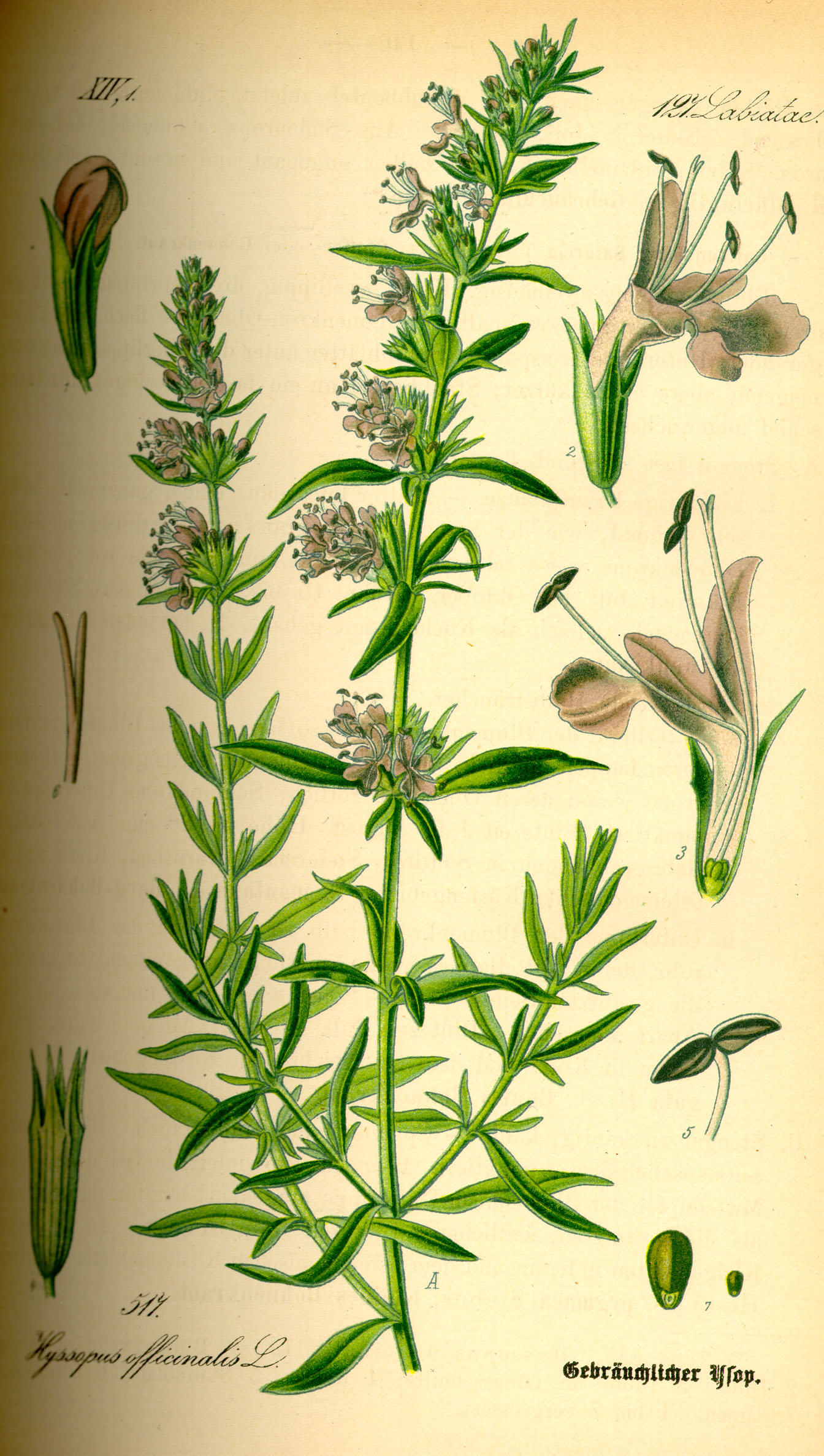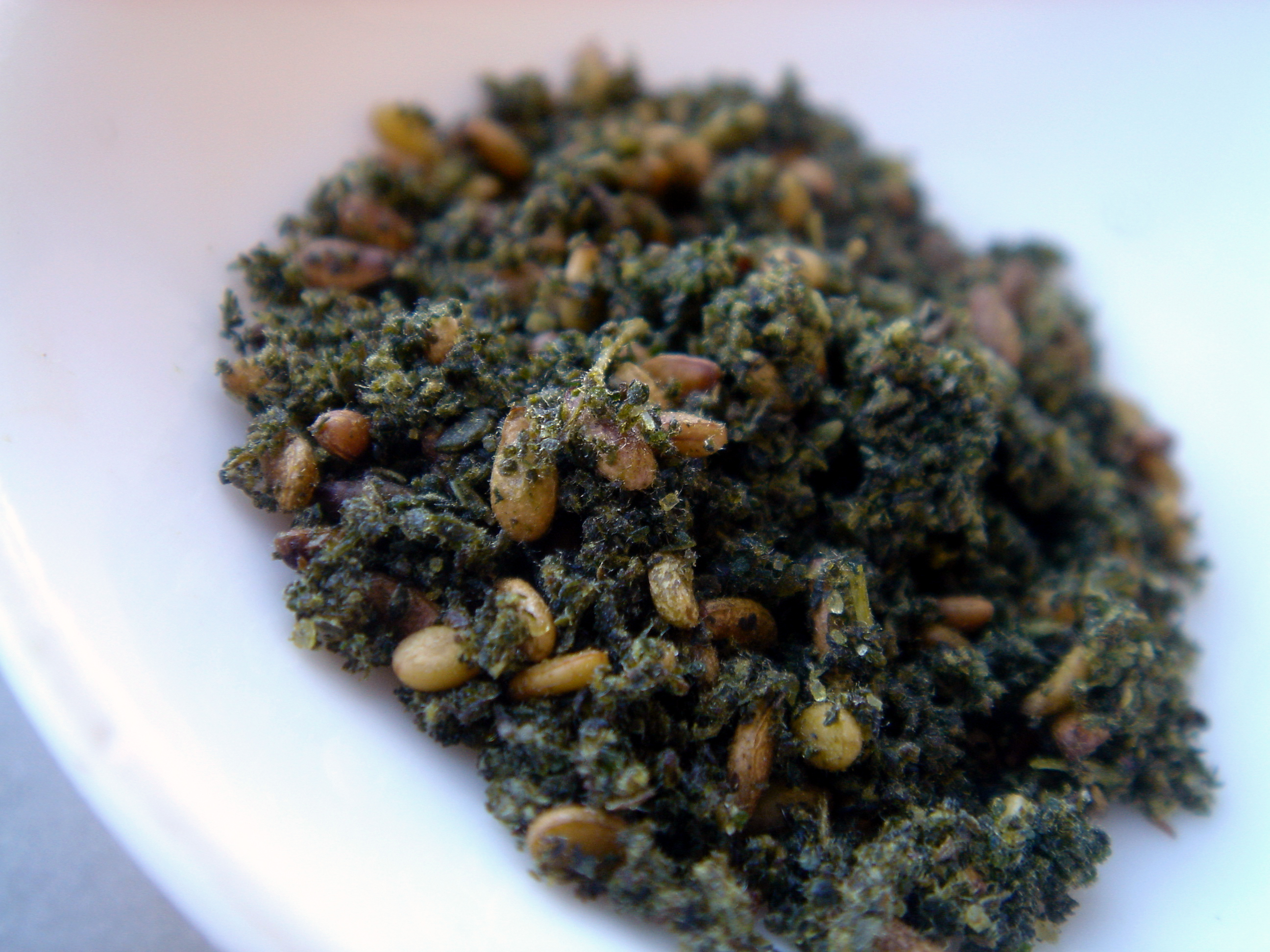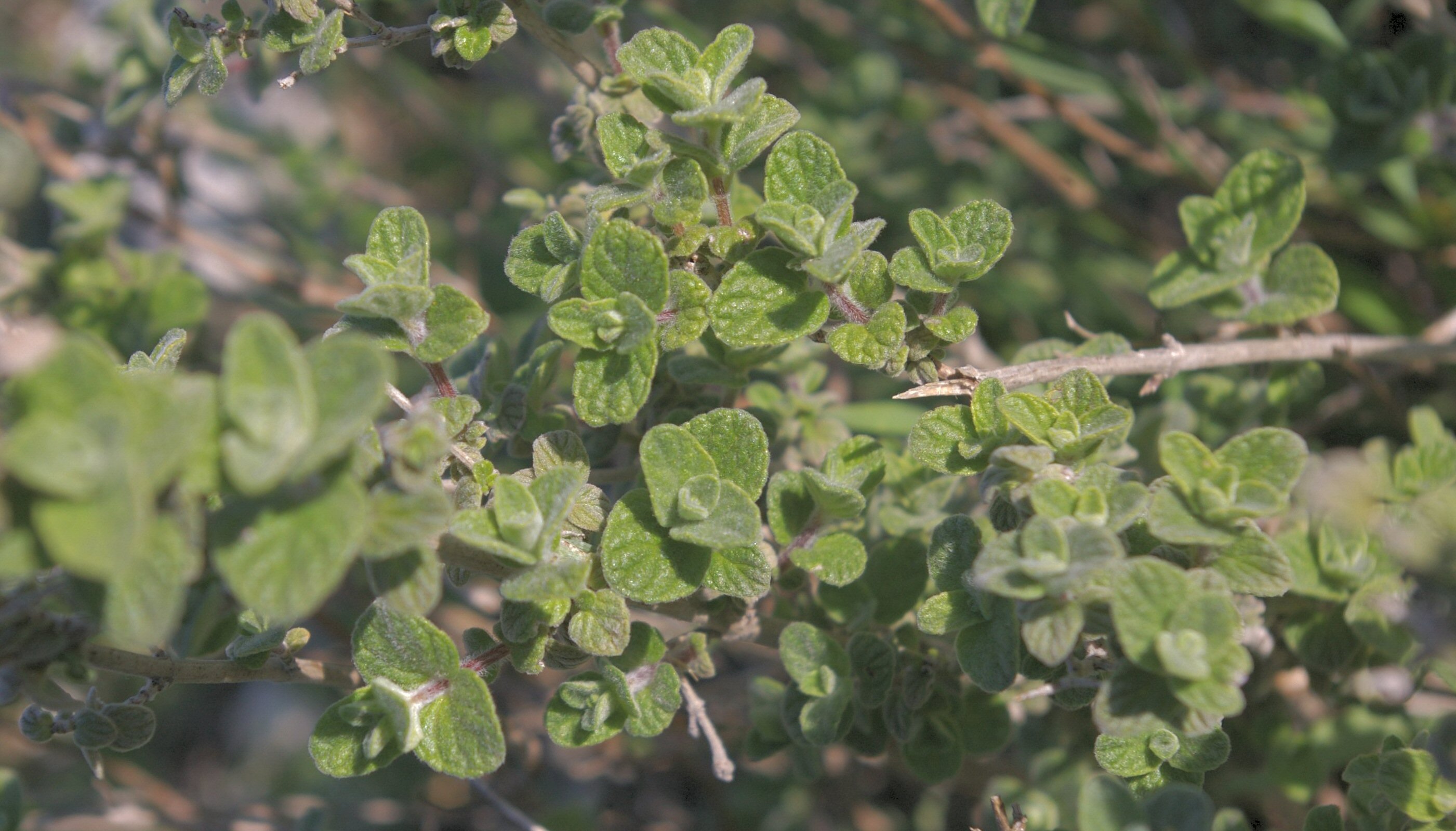|
Hyssopus (plant)
''Hyssopus'' (hyssop) is a genus of herbaceous or semi-woody plants in the family Lamiaceae, native from the east Mediterranean to central Asia as far east as Mongolia. They are aromatic, with erect branched stems up to 60 cm long covered with fine hairs at the tips. The leaves are narrow oblong, 2–5 cm long. The small blue flowers are borne on the upper part of the branches during summer. By far the best-known species is the herb hyssop (''H. officinalis''), widely cultivated outside its native area in the Mediterranean. Though commonly called "''hyssop''", anise hyssop ('' Agastache foeniculum''; also called blue giant hyssop) and all ''Agastache'' species are not members of ''Hyssopus''. However, both genera are in the mint family. ;Species # '' Hyssopus ambiguus'' (Trautv.) Iljin ex Prochorov. & Lebel - Altai Republic of Russia, Kazakhstan # '' Hyssopus cuspidatus'' Boriss. - Altai Republic, Kazakhstan, Xinjiang, Mongolia # '' Hyssopus latilabiatus'' C.Y ... [...More Info...] [...Related Items...] OR: [Wikipedia] [Google] [Baidu] |
Carl Linnaeus
Carl Linnaeus (; 23 May 1707 – 10 January 1778), also known after his ennoblement in 1761 as Carl von Linné Blunt (2004), p. 171. (), was a Swedish botanist, zoologist, taxonomist, and physician who formalised binomial nomenclature, the modern system of naming organisms. He is known as the "father of modern taxonomy". Many of his writings were in Latin; his name is rendered in Latin as and, after his 1761 ennoblement, as . Linnaeus was born in Råshult, the countryside of Småland, in southern Sweden. He received most of his higher education at Uppsala University and began giving lectures in botany there in 1730. He lived abroad between 1735 and 1738, where he studied and also published the first edition of his ' in the Netherlands. He then returned to Sweden where he became professor of medicine and botany at Uppsala. In the 1740s, he was sent on several journeys through Sweden to find and classify plants and animals. In the 1750s and 1760s, he continued to collect an ... [...More Info...] [...Related Items...] OR: [Wikipedia] [Google] [Baidu] |
Hyssopus Cuspidatus
''Hyssopus'' may refer to: * ''Hyssopus'' (wasp), a genus of wasps in the family Eulophidae * ''Hyssopus'' (plant), a genus of aromatic plants in the family Lamiaceae known as hyssop {{Genus disambiguation ... [...More Info...] [...Related Items...] OR: [Wikipedia] [Google] [Baidu] |
Herbs
In general use, herbs are a widely distributed and widespread group of plants, excluding vegetables and other plants consumed for macronutrients, with savory or aromatic properties that are used for flavoring and garnishing food, for medicinal purposes, or for fragrances. Culinary use typically distinguishes herbs from spices. ''Herbs'' generally refers to the leafy green or flowering parts of a plant (either fresh or dried), while ''spices'' are usually dried and produced from other parts of the plant, including seeds, bark, roots and fruits. Herbs have a variety of uses including culinary, medicinal, aromatic and in some cases, spiritual. General usage of the term "herb" differs between culinary herbs and medicinal herbs; in medicinal or spiritual use, any parts of the plant might be considered as "herbs", including leaves, roots, flowers, seeds, root bark, inner bark (and cambium), resin and pericarp. The word "herb" is pronounced in Commonwealth English, but is common am ... [...More Info...] [...Related Items...] OR: [Wikipedia] [Google] [Baidu] |
Ezov
Ezov ( he, אֵזוֹב) is the Classical Hebrew name of a plant mentioned in the Bible in the context of religious rituals. In some English-language Bibles, the word is transliterated as ''ezob.'' The Septuagint translates the name as ὕσσωπος ''hyssop'', and English translations of the Bible often follow this rendering. The Hebrew word אזוב and the Greek word ὕσσωπος probably share a common (unknown) origin. In the Bible, ''ezov'' is described as a small plant found on or near walls, with an aromatic odour.''Jewish Encyclopedia'' Maimonides, Saadia Gaon and earlier Jewish commentators identified ''ezov'' with ''za'atar'', which may refer to various local herbs, including marjoram, oregano and thyme, which have aromatic and cleansing properties, grow wild in Israel, and can easily be bunched together to be used for sprinkling. The book of John in the New Testament (written in Koine Greek) mentions that ''hyssop'' was used, along with vinegar, to alleviate ... [...More Info...] [...Related Items...] OR: [Wikipedia] [Google] [Baidu] |
Za'atar
Za'atar ( ; ar, زَعْتَر, ) is a culinary herb or family of herbs. It is also the name of a spice mixture that includes the herb along with toasted sesame seeds, dried sumac, often salt, as well as other spices. As a family of related Middle Eastern herbs, it contains plants from the genera ''Origanum'' ( oregano), ''Calamintha'' ( basil thyme), ''Thymus'' (typically ''Thymus vulgaris'', i.e., thyme), and ''Satureja'' ( savory) plants.Allen, 2007p. 237. The name ''za'atar'' alone most properly applies to ''Origanum syriacum'', considered in biblical scholarship to be the ezov ( he, אזוב ) of the Hebrew Bible, often translated as ''hyssop'' but distinct from modern ''Hyssopus officinalis''. Used in Levantine cuisine, both the herb and spice mixture are popular throughout the Mediterranean region of the Middle East. Etymology According to Ignace J. Gelb, an Akkadian language word that can be read ''sarsar'' may refer to a spice plant. This word could be attested ... [...More Info...] [...Related Items...] OR: [Wikipedia] [Google] [Baidu] |
Ezov
Ezov ( he, אֵזוֹב) is the Classical Hebrew name of a plant mentioned in the Bible in the context of religious rituals. In some English-language Bibles, the word is transliterated as ''ezob.'' The Septuagint translates the name as ὕσσωπος ''hyssop'', and English translations of the Bible often follow this rendering. The Hebrew word אזוב and the Greek word ὕσσωπος probably share a common (unknown) origin. In the Bible, ''ezov'' is described as a small plant found on or near walls, with an aromatic odour.''Jewish Encyclopedia'' Maimonides, Saadia Gaon and earlier Jewish commentators identified ''ezov'' with ''za'atar'', which may refer to various local herbs, including marjoram, oregano and thyme, which have aromatic and cleansing properties, grow wild in Israel, and can easily be bunched together to be used for sprinkling. The book of John in the New Testament (written in Koine Greek) mentions that ''hyssop'' was used, along with vinegar, to alleviate ... [...More Info...] [...Related Items...] OR: [Wikipedia] [Google] [Baidu] |
English Translations Of The Bible
Partial Bible translations into languages of the English people can be traced back to the late 7th century, including translations into Old and Middle English. More than 100 complete translations into English have been written. In the United States, 55% of survey respondents who read the Bible reported using the King James Version in 2014, followed by 19% for the New International Version, 18% for the three next most popular versions combined, and less than 10% for all other versions. Old English The Bible in its entirety was not translated into English until the Middle English period, with John Wycliffe's translation in 1382. In the centuries before this, however, many had translated large portions of the Bible into English. Parts of the Bible were first translated from the Latin Vulgate into Old English by a few monks and scholars. Such translations were generally in the form of prose or as interlinear glosses (literal translations above the Latin words). Very few complete ... [...More Info...] [...Related Items...] OR: [Wikipedia] [Google] [Baidu] |
Septuagint
The Greek Old Testament, or Septuagint (, ; from the la, septuaginta, lit=seventy; often abbreviated ''70''; in Roman numerals, LXX), is the earliest extant Greek translation of books from the Hebrew Bible. It includes several books beyond those contained in the Masoretic text of the Hebrew Bible as canonically used in the tradition of mainstream Rabbinical Judaism. The additional books were composed in Greek, Hebrew, or Aramaic, but in most cases, only the Greek version has survived to the present. It is the oldest and most important complete translation of the Hebrew Bible made by the Jews. Some targums translating or paraphrasing the Bible into Aramaic were also made around the same time. The first five books of the Hebrew Bible, known as the Torah or the Pentateuch, were translated in the mid-3rd century BCE. The remaining translations are presumably from the 2nd century BCE. The full title ( grc , Ἡ μετάφρασις τῶν Ἑβδομήκοντα, , The Translat ... [...More Info...] [...Related Items...] OR: [Wikipedia] [Google] [Baidu] |
Greek Language
Greek ( el, label=Modern Greek, Ελληνικά, Elliniká, ; grc, Ἑλληνική, Hellēnikḗ) is an independent branch of the Indo-European family of languages, native to Greece, Cyprus, southern Italy (Calabria and Salento), southern Albania, and other regions of the Balkans, the Black Sea coast, Asia Minor, and the Eastern Mediterranean. It has the longest documented history of any Indo-European language, spanning at least 3,400 years of written records. Its writing system is the Greek alphabet, which has been used for approximately 2,800 years; previously, Greek was recorded in writing systems such as Linear B and the Cypriot syllabary. The alphabet arose from the Phoenician script and was in turn the basis of the Latin, Cyrillic, Armenian, Coptic, Gothic, and many other writing systems. The Greek language holds a very important place in the history of the Western world. Beginning with the epics of Homer, ancient Greek literature includes many works of lasting impo ... [...More Info...] [...Related Items...] OR: [Wikipedia] [Google] [Baidu] |
Hyssopus Subulifolius
''Hyssopus'' may refer to: * ''Hyssopus'' (wasp), a genus of wasps in the family Eulophidae * ''Hyssopus'' (plant), a genus of aromatic plants in the family Lamiaceae known as hyssop {{Genus disambiguation ... [...More Info...] [...Related Items...] OR: [Wikipedia] [Google] [Baidu] |
Hyssopus Seravschanicus
''Hyssopus'' may refer to: * ''Hyssopus'' (wasp), a genus of wasps in the family Eulophidae * ''Hyssopus'' (plant), a genus of aromatic plants in the family Lamiaceae known as hyssop {{Genus disambiguation ... [...More Info...] [...Related Items...] OR: [Wikipedia] [Google] [Baidu] |
Hyssopus Officinalis
''Hyssopus officinalis'' or hyssop is a shrub in the Lamiaceae or mint family native to Southern Europe, the Middle East, and the region surrounding the Caspian Sea. Due to its purported properties as an antiseptic, cough reliever, and expectorant, it has been used in traditional herbal medicine. Description Hyssop is a brightly coloured shrub or subshrub that ranges from in height. The stem is woody at the base, from which grow a number of upright branches. Its leaves are lanceolate, dark green, and from long. During the summer, hyssop produces pink, blue, or, more rarely, white fragrant flowers. These give rise to small oblong tetra-achenes. History A plant called hyssop has been in use since classical antiquity. Its name is a direct adaptation from the Greek ὕσσωπος (). The Hebrew word אזוב (''ezov'', ''esov'', or ''esob'') and the Greek word ὕσσωπος probably share a common (but unknown) origin. The name hyssop appears as a translation of ''ezov'' ... [...More Info...] [...Related Items...] OR: [Wikipedia] [Google] [Baidu] |






.jpg)
.jpg)
